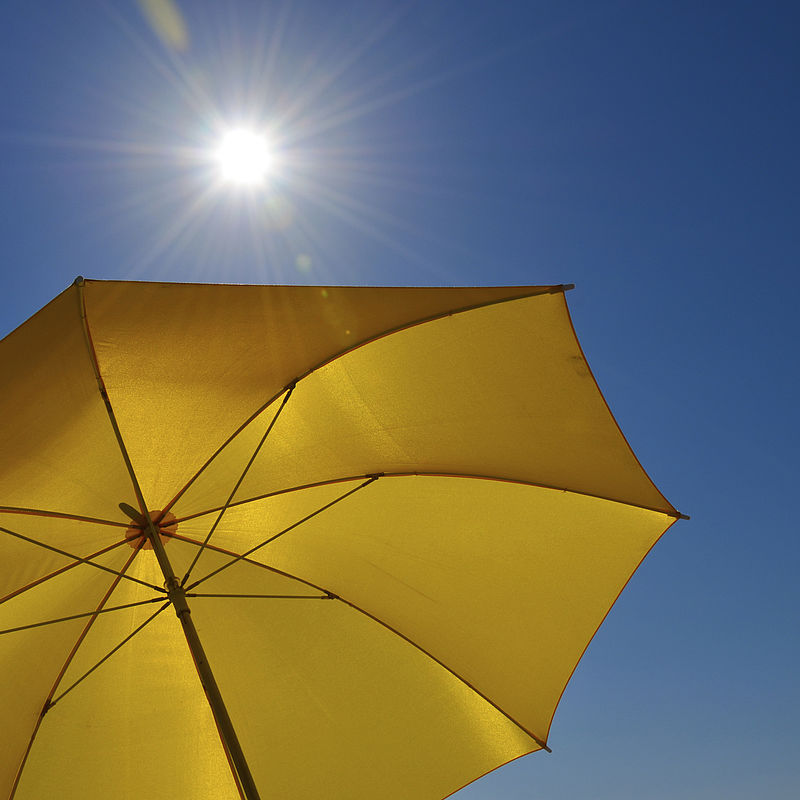
Improving the measurements used to protect atmospheric ozone
Challenge
Ozone, comprised of three linked oxygen atoms, is generated in the stratosphere by the action of solar radiation on oxygen gas, and absorbs 99% of the sun’s biologically harmful UV-B radiation (280 - 315 nm) that is a cause of skin cancers in humans.
A rare molecule, it is concentrated in a band around 20-25 km above sea level, the ‘ozone layer’. Its levels are measured by spectrophotometers, or spectroradiometers, in a square column (1 cm2) stretching from the Earth’s surface to the edge of space. If all the ozone in this ‘Total Ozone Column’ (TOC) was compressed at 0 oC under 1 atmospheric pressure it would measure approximately 3 mm in depth.
In 1976, it was discovered that ozone was being destroyed by chemicals released through anthropogenic activities and in 1987 the Montreal International Treaty was introduced to phase out substances responsible for ozone depletion. Due to this protocol ozone is expected to recover to 1980 levels by the mid-21st century, but longer periods of observation are necessary to both monitor its status and assess the effects of climate change on its levels.
However, established monitoring networks use different instrument types, such as Dobson or Brewer spectrophotometers, that produce small but significant differences in data, impeding the merging of results from different networks. In addition, ‘stray light’ generated in these instruments by solar radiation can mask the weaker ozone signals, requiring correction factors to resolve.
Improved instrumentation was required with greater accuracy and long-term stability to reliably measure this important molecule.
Solution
During the atmoz project, an array spectroradiometer, the BTS2048-UV-S, developed by Gigahertz–Optik, was extensively characterised. Capable of measurements of solar output at step increments <0.2 nm across the full UV spectrum, instead of at only a few wavelengths as per the Brewer or Dobson spectrophotometers, it offered increased reliability for TOC retrieval. In addition, the compact instrument incorporated 6 different filters to reduce the stray-light effects.
The spectroradiometer also participated in an intercomparison campaign at Izaña, Tenerife, organised by the Izaña Atmospheric Research Center of the Spanish Meteorological Agency (AEMET) and the World Radiation Center (PMOD-WRC), where new instruments and techniques developed within the project were compared to well-established Dobson and Brewer spectrophotometer methods and the world travelling standard QASUME. Results of the intercomparison demonstrated that the BTS2048-UV-S produced high quality data for TOC measurements with deviations of less than 1.5% from most other instruments in most situations and not exceeding 3% from established TOC measurement systems such as Dobson or Brewer.
Impact
Gigahertz–Optik is a world-leading provider of instruments and solutions for challenging light measurements in all optical areas, including the UV, general LED lighting to more specialised applications like LiDAR laser power and waveform measurements.
The company acknowledge the benefit gained from the knowledge of the project’s consortium, and added new capabilities to their BTS2048-UV-S instrument for ozone measurements, such as a sun-tracker, an improved software algorithm for TOC derivation, and a collimator for direct solar measurements.
Following the end of the atmoz project in 2017, the array spectroradiometer was further tested for long-term (> 1 year) stability in a measurement campaign at the DWD meteorological observatory in Germany, part of the global ozone monitoring network, and the PMOD/WRC at Switzerland, part of the European Brewer Network. No change in the instrument’s responsivity was observed during the whole measurement campaign period, demonstrating its robustness and accuracy.
Now marketed by Gigahertz–Optik as the BTS-Solar, it is the first array spectroradiometer that has been validated for quality and precision TOC measurements, and has since been used in the EURAMET project BIOSPHERE, which examined the effects of extraterrestrial radiation on the ozone layer.
The use of spectroradiometers, like the BTS-Solar, will provide greater certainty in ozone measurements, help enforce the Montreal Treaty, and protect the ozone that ‘shields’ the Earth from damaging UV radiation.
- Category
- EMRP,
- Environment,
